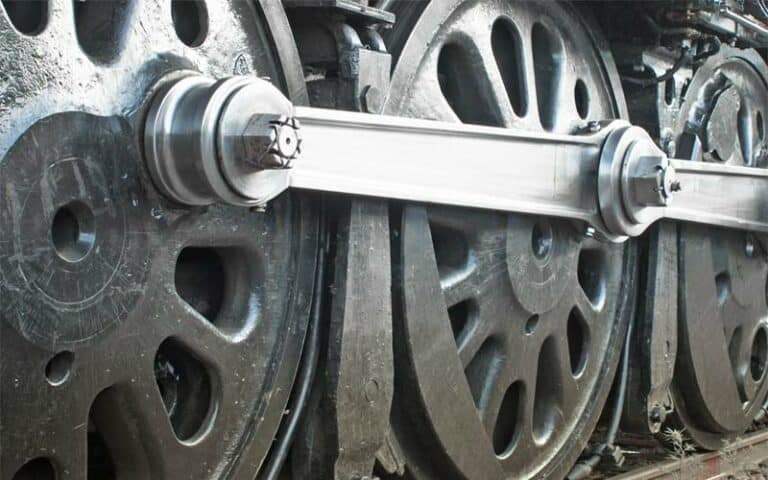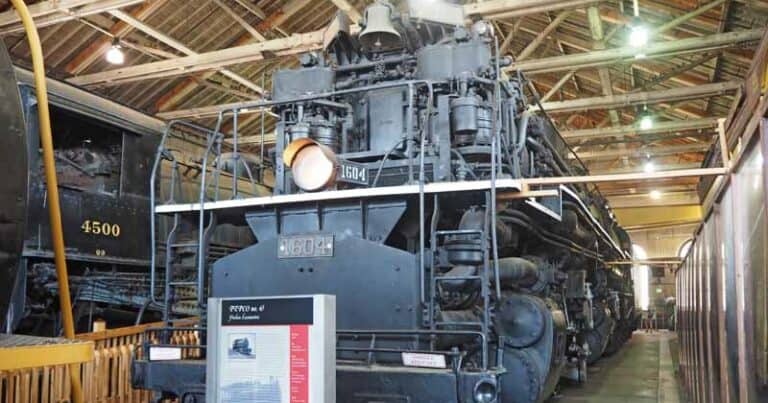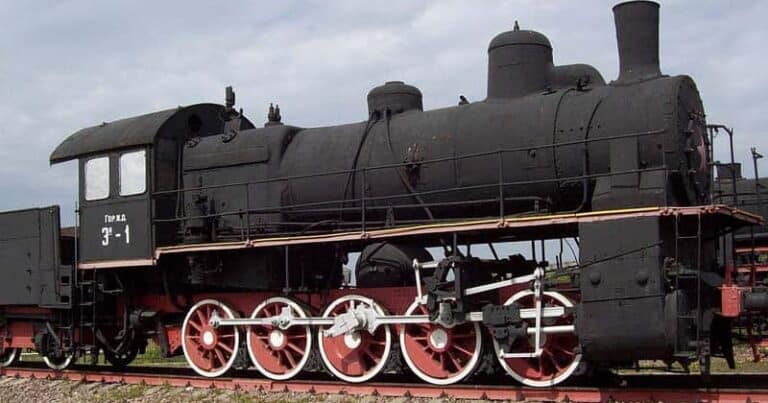The C&O Allegheny, 60 Incredible Locomotives
Chesapeake and Ohio (C&O) “Allegheny” locomotives are considered among the powerful and largest steam locomotives ever built. Introduced in 1941, the C&O Allegheny represents the peak of steam locomotive technology. It weighed around 1.2 million pounds with loaded tender and generated about 7500 horsepower. In short, they are beasts.
These massive steam engines were designed and built for Chesapeake and Ohio by Lima Locomotive Works. The locomotive got its name as it was used to operate in the Allegheny m from the line that it was meant to operate, which is in Southern and Western Virginia. However, after 11 years after it was introduced, C&O started to pull these powerful machines from service.
With the introduction of diesel and electric locomotives, they proved flexible and cost-effective compared to steam locomotives. The C&O Allegheny got the state-of-the-art technology and luckily two of them have been preserved to remind the world about their sheer power and performance.
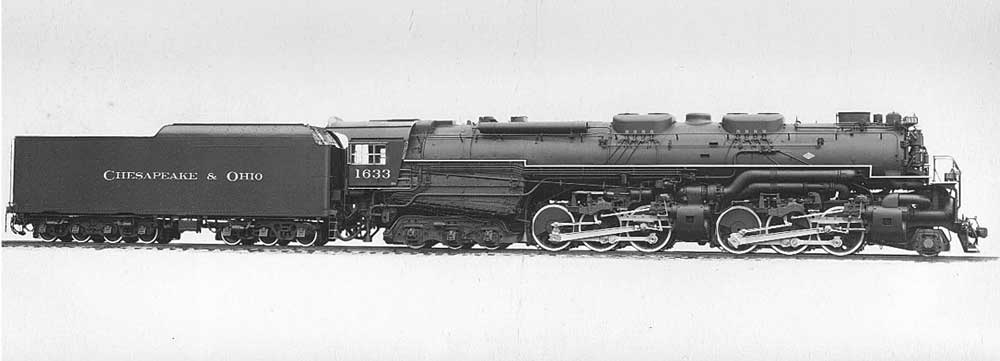
The Allegheny: An Overview
The Chesapeake and Ohio H-8 were among the 60 2-6-6-6 steam locomotives that were built by the Lima Locomotive Works. The company was based in Lima, Ohio. And, these locomotives were built between 1941 and 1948. Unfortunately, their operations came to a halt during the mid-1950s.
The C&O was considered as some of the powerful steam locomotives that were built as of now. The 2-6-6-6 type is an articulated type of locomotive that has two wheels leading from the front. As said, the C&O Allegheny steam locomotives represented world-class technology available in those days.
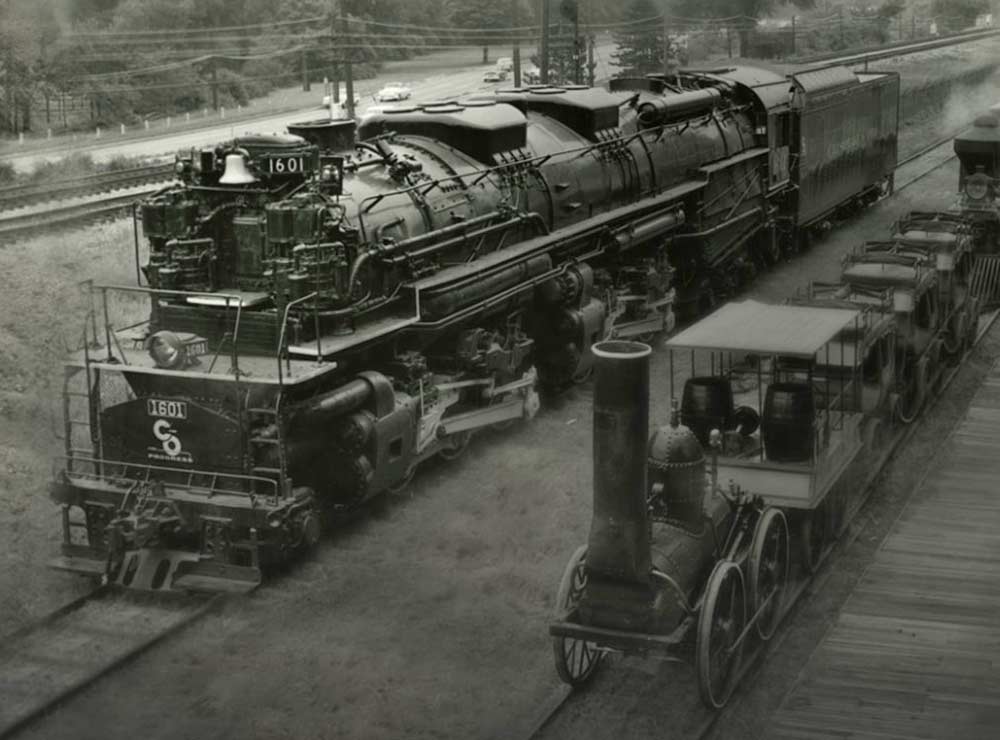
And, it can be seen in every part of this massive engine. Apart from the front wheels, it housed six driving and six trailing wheels, both two sets each. Most importantly, only two kinds of the 2-6-6- were ever built. One represents the so-called “Allegheny”. So, what about the history of the Allegheny?
When Lima Locomotive Works built the 2-6-6-6 for Chesapeake and Ohio in 1941, it was used to carry loaded coal trains through the Allegheny Mountains. This is how the steam locomotive earned its name. The other kind was designed for the Virginia Railway and was nicknamed “Blue Ridge”.
The 2-6-6-6 were some of the heaviest and powerful steam locomotives ever designed and built. It has 7500 horsepower and weighed around 386 tons. Also, not to forget about the tender, which weighed about 215 tons when filled with coal and water completely.
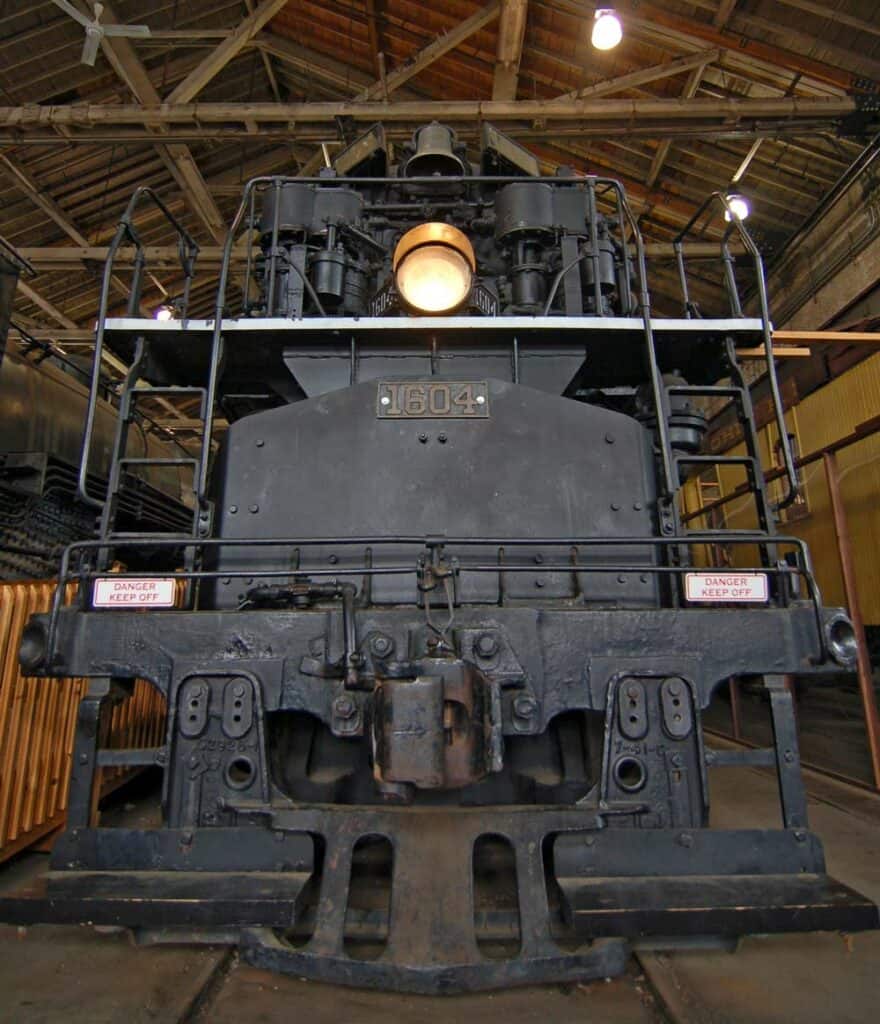
How many were built? Do any Survive?
Speaking about the preserved Alleghenies, Lima Locomotive Works made 60 of them for the Chesapeake and Ohio Railway between 1941 and 1948. Another class was called “Blue Ridge”. And, Lima Locomotive Works made eight of them for the Virginia Railway in the year 1945.
Only two Alleghenies are preserved, which are 1601 and 1604. Upon their retirement in the year 1956 by C&O Railway, 1601 was donated to Henry Ford Museum located in Dearborn in Michigan. The massive locomotive continues to stay indoors since it was brought to the museum.
However, things are a bit different with 1604. At first, it was sent to the Chesapeake and Ohio scrap lines located close to their diesel workshops at Russell, Kentucky. Later, it was donated to Virginia Museum in Roanoke. 1604 was kept next to the N&W 1218.
But on November 4, 1985, the locomotive was partially damaged because of waterlogging caused by a flood. As a result, the water washed away the ground underneath 1604. Moreover, the damage was critical that it appeared that the locomotive might flip over. However, the worse didn’t happen.
It was in the year 1987 that the company Norfolk Southern performed a thorough cosmetic overhaul of the machine at their workshop in Roanoke. After the work was completed, 1604 was sent to Baltimore. The purpose was to display it as a centerpiece of a shopping center at Mount Clare Junction.
This place was adjacent to B&O Railroad Museum. Finally, in the year 1989, the shopping center donated 1604 to the museum. It resides there to this day.
Why did the C&O need such a powerful steam locomotive?
The Allegheny steam locomotives were primarily designed to power the coal trains on the eastward climb that stretches from the White Sulphur Springs to West Virginia to the Allegheny Mountains. In short, these locomotives were built to haul freight through the rough patches of the Allegheny Mountains.
That’s how they got their name “Alleghenies”. The locomotives could operate a coal train bearing a weight of about 11500 tons. Moreover, they can pull 60 cars intended for passengers. And, these are done without much effort, thanks to the innovative technology and design of the 2-6-6-6 locomotives.

Apart from that, they have the heaviest axle load compared to ordinary steam locomotives with a maximum load of around 86,700 lbs. In one test conducted by the Chesapeake and Ohio Railway, it was found that the readings show between 6700 and 6900 horsepower running at a speed of 72 kilometers per hour (45 miles per hour).
With each locomotive at the front and back, the coal train carrying 11,500 tons left Hinton, West Virginia. From White Sulphur Springs, the locomotives ran at full throttle up to the Allegheny Mountains. The Chesapeake and Ohio Railway’s 2-6-6-6 handles coal trains starting from West Virginia to Columbus, Ohio without trouble.
WHAT NEED DID THE C&O HAVE FOR THEM?
As said, the main purpose of the C&O Allegheny steam locomotives was to design a powerful machine that can haul heavy trains over the steep slopes of the Allegheny Mountains. This is the main reason why the Chesapeake and Ohio Railway needed a powerful locomotive to conquer what seem to be a difficult task.
So, the question is, Chesapeake and Ohio used Alleghenies in what service? Well, the answer is simple. They want to have a better locomotive that can challenge the mighty Allegheny Mountains with ease. As such, business would flourish and in turn make the economy of the state a strong one.
Even the Union Pacific attempted to design a powerful locomotive that can help heavy freight trains maneuver through steep sections of the Sherman Mountains and the Wasatch Range located in the states of Wyoming and Utah. And, this leads to the birth of Big Boy 4-8-8-4. In the same way, the C&O Railway developed the H-8 locomotives.
During the 1930s, the Chesapeake and Ohio Railways improves their railroad by enlarging the existing tunnels and making new ones. The Class T-1 2-10-4 locomotives arrived during the early years of the 1930s and seemed to be the obvious choice for hauling coal trains. It was an 80-mile stretch from Hinton, east West Virginia to Clifton Forge.
Included in this stretch was the 13-mile, 2072-foot, and 0.577% grade steep climb of the Allegheny Mountains. However, it includes a 1.14% grade descent down to Clifton Forge. Their 2-6-6-2s were getting old and were inefficient to complete the task. Also, the 2-8-8-2s from the 1920s were failing as well.
Hence, the C7O Railway was on the verge of ordering more. That’s when the idea of a new and improved powerful locomotive design cropped up. Lima Locomotive Works was approached and they came up with a design that was about to make history. The design was a single-expansion, 6-coupled articulated wheels along with a large boiler for generating more steam.
And, around 778,000 pounds of weight to keep the locomotive in its place while moving. The big firebox behind the drivers and a 6-wheel trailing truck was installed. That way, the massive engine got its support from all sides. With 4 22.5×33-inch diameter stroke cylinders and a 260 psi boiler pressure, it got the right tractive effort.
The first order that the Chesapeake and Ohio Railway gave to Lima Locomotive Works was of ten new 2-6-6-6 steam locomotives. And, they delivered the same in December 1941. These machines were assigned numbers from 1600 to 1609 and designated as Class H-8. With a different wheel arrangement, the C&O gave it a new name.
Even the tenders used on these locomotives were of massive size. The tender can hold 25 tons of coal and 25,000 gallons of water. To maintain the overall length and balance of the locomotive, it was imperative to make the tender higher at the rear end. That way, the rear end would have much weight compared to the front.
In one test it was proved that an Allegheny leading and another pushing can move a 140 car coal train from the Hinton station through the mountain with ease. When the train reached the top, the one at the back can be detached. The front Allegheny can descent down toward Clifton Forge without attracting difficulties.
Of the 23 Alleghenies that C&O Railways had, most were used to carry freight and a few were used for passenger service. However, they were rarely used and mostly pulled troops during World War II. There is no denying that the C&O Allegheny has been the ultimate locomotive for carrying goods.
CONCLUSION:
So, the 2-6-6-6s were more powerful both in terms of power and being at the pinnacle of innovation. Sadly, most of the Alleghenies were almost new when the decision to discontinue them erupted. Within 15 years of service, these massive, powerful locomotives were scrapped. However, two of them are preserved in museums.

A longtime railfan, Bob enjoys the research that goes into his articles. He is knowledgeable on many railroad topics and enjoys learning about new topics. You can get a hold of Bob at his email link below.


